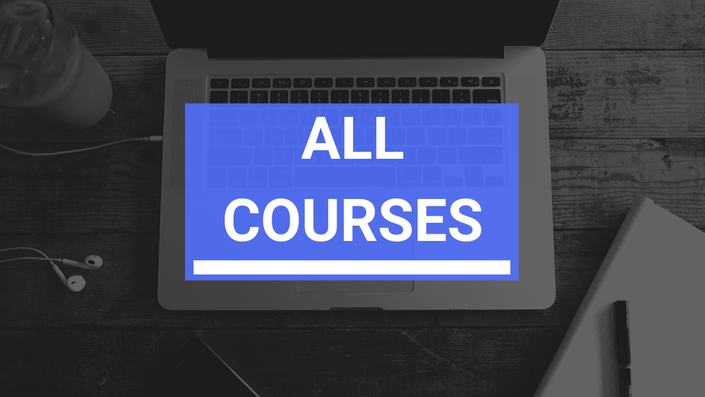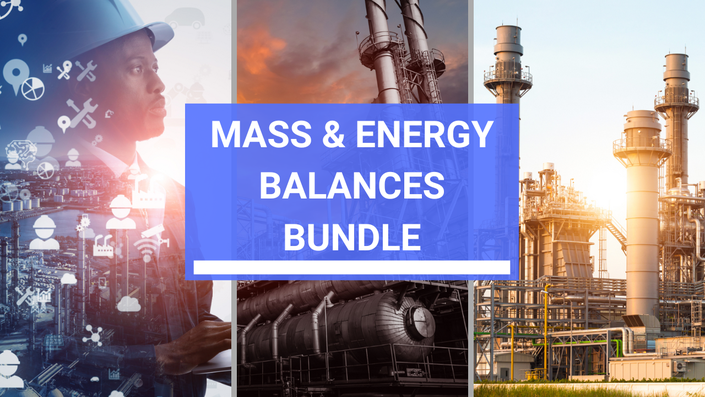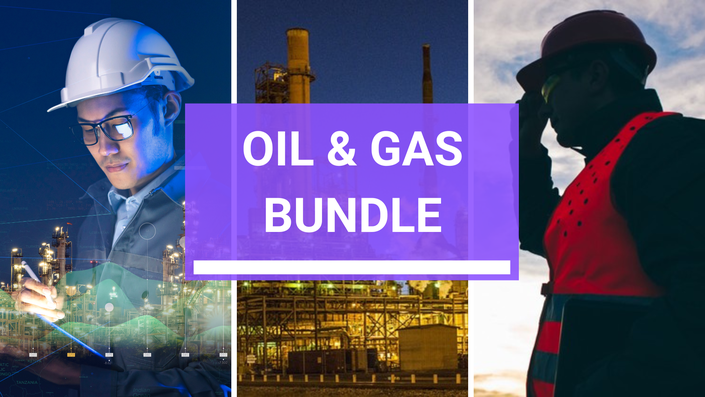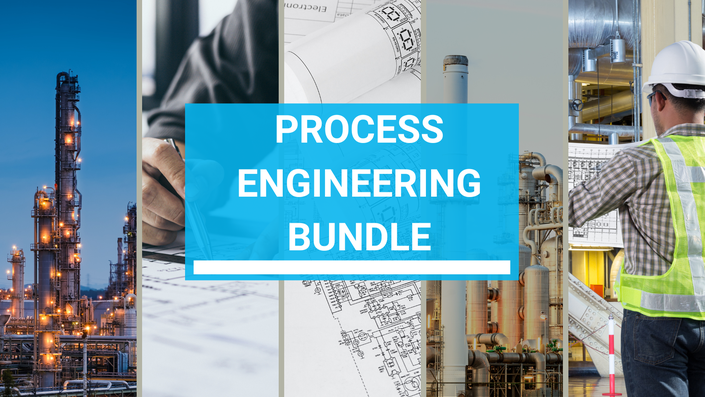Course Trailer
About this Course
📚 This Mass Balance: Fundamentals course covers the core principles of mass balance, providing you with the essential skills to solve real-world chemical engineering problems. You will learn how to apply mass balance concepts to optimize chemical processes, ensuring efficiency and precision in process design and analysis.
Key topics covered include:
- Introduction to Mass Balance and Conservation of Mass
- Basic Mass Balance Equations
- Steady-State vs. Unsteady-State Systems
- Applications of Mass Balance in Chemical Processes
- Solving Mass Balance Problems in Real-World Systems
- Mass Balance in Unit Operations (e.g., Reactors, Separators)
👨🏫 Designed for
Chemical engineering students, process engineers, and professionals looking to master mass balance principles and apply them effectively in process analysis, design, and optimization.
📚 Course Approach
This course combines theoretical concepts with practical applications, using real-world case studies and examples to help you understand how to apply mass balance to optimize chemical engineering processes and improve process performance.
🎯 By the end of the course, you will be able to:
- Understand the fundamental principles of mass balance and conservation of mass
- Formulate and solve mass balance equations for various systems
- Analyze both steady-state and unsteady-state systems
- Apply mass balance techniques to solve engineering problems in unit operations
- Optimize processes by incorporating mass balance calculations
🚀 Recommended for
Students and professionals in chemical and process engineering who are looking to gain a solid understanding of mass balance and its role in optimizing chemical processes.
✅ You’ll learn to:
- Derive and solve basic mass balance equations
- Analyze systems at steady-state and unsteady-state conditions
- Apply mass balance techniques to reactors, separators, and other unit operations
- Use mass balance for troubleshooting and optimizing processes
- Integrate mass balance principles into larger process designs

Self-Paced, Dynamic Lectures
Learn at your own pace, anytime and anywhere.
The lectures are concise, engaging, and focused—designed to maximize your understanding efficiently.

Downloadable Material
Get access to all simulation files, workshop materials, spreadsheets, reference guides and companion E-Book.
Use them to practice offline, follow along with lessons, or revisit concepts anytime.

Evaluations, Quizzes
Evaluate your progress through interactive quizzes and self-assessments.
Reinforce key concepts, identify gaps, and ensure you're ready to apply what you've learned in real scenarios.

30 Day Money-Back Warranty
Enroll with confidence—if the course doesn’t meet your expectations, you can request a full refund within 30 days.
No questions asked.

Certificate of Completion
Receive an official certificate or diploma once you finish the course—perfect for showcasing your new skills on your resume, LinkedIn, or job applications.

Instructor Support
Get guidance whenever you need it—ask questions, request feedback, and interact directly with the instructor throughout the course.
Example Curriculum
- UPDATE (2023): Notes on this Section (2:05)
- Mass Balance - An Introduction (7:52)
- Principles and Equations (20:14)
- Types of Processes (33:02)
- Diagram Construction (14:58)
- Scale-up and Basis of Calculation (12:52)
- Mass Balances with NO Chemical Reaction (15:13)
- Mass Balance - A Methodology (16:39)
- Mass Balances in 2 Units (17:56)
- Mass Balances in 2 or More Units (6:48)
- Bypass & Recycle in Mass Balances (22:10)
- Section 1 Break & Review (3:43)
- Mass Balances in Reactive Systems (26:25)
- Section 2 Break & Review (4:39)
- Chemical Equilibrium and Mass Balances (20:55)
- Mass Balance with Multiple Chemical Reactions (27:08)
- Mass Balances using Atomic Species Balances (21:07)
- The Concept of Global and Single Pass Conversion (5:49)
- Mass Balances with Purge (6:21)
- Exercise - Chemical Process with Purge (24:13)
- Combustion and Mass Balances (26:00)
- Exercise: Combustion and Mass Balances (10:28)
- BONUS - Practice Problems 4.26 Sulfur Dioxide SO2 Scrubbing Operation (34:43)
- Recommended - Practice Problems!
- End of Section 2 (4:08)
- Closure to "Mass Balance Introduction" (7:32)
- Evaluation - Block 1 Part A
- Evaluation - Block 1 Part B
- Evaluation - Block 1 Part C
- UPDATE (2023): Notes on this Section (1:26)
- Introduction to Single Phase Processes and their Mass Balances (3:12)
- Mass Balance of Solids & Liquids (17:52)
- Section 1 Break & Review (1:54)
- Ideal Gases - Theory & Exercises (41:49)
- Exercises: Mass Balances with Ideal Gases (11:34)
- BONUS - Practice Problems 5.54 Production of Methanol with Ideal Gas Equilibrium (48:50)
- Real Gases - How to Model Them (6:49)
- Virial Equation (Real Gas Model) - Theory and Exercise (12:40)
- The "Z" Compressibility Factor for Real Gases - Theory and Exercise (26:29)
- Section 2 Break & Review (0:34)
- Closure to Single Phase Mass Balances (4:13)
- Recommended Practice Problems for Block 2
- Evaluation Block 2
- UPDATE (2023): Notes on this Section (1:34)
- Mutiple Phase Material Balances - An Introduction (9:04)
- Phase Diagrams - How to use them (36:22)
- Gibbs Phase Rule (20:10)
- Vapor-Liquid Systems - One Condensable Species (29:07)
- Humidity and Psychrometric Charts - Theory and Exercises (30:03)
- Section Break & Review (4:15)
- Vapor-Liquid Equilibrium Systems (Henry Law, Raoults Law & more) (38:16)
- BONUS - Practice Problems 6.44 Production of Sulfuric Acid given Vapor Pressures (20:05)
- Solid-Liquid Equilibrium Systems (Solubility, Crystallization, Hydrated Salts & more) (24:37)
- Liquid-Liquid Equilibrium Systems - (Extraction & More) (14:13)
- Recommended Practice Problems for Block 3
- Closure - Multiple Phase Mass Balances (5:33)
- Evaluation Block 3
- UPDATE (2023): Notes on this Section (1:26)
- Introduction to Transient State (Unsteady State) Mass Balances (5:15)
- Theory behind Transient State (63:43)
- Exercises: Unsteady State Mass Balances (29:28)
- Recommended Practice Problems for Block 4
- Closure - Transient State Mass Balances (6:39)
- Evaluation Block 4
Course Enrollment
This and all other courses are available only via the All Courses - One Subscription Membership.

Hi, I’m Emmanuel Ortega,
a.k.a. the Chemical Engineering Guy!
With five years in the chemical industry, from petrochemical plant design to polyester textiles, I bring real-world experience to show the true value of engineering knowledge.
My Expertise:
- Process Simulation & Optimization
- Chemical Process Design
- Process Equipment Design
- Automotive & Industrial Polyester Yarn Technologies
- Online Tutoring, Online Education Management
The Courses I design are entirely dynamic. You will see theory and then apply it ASAP to a real life problem! I even use the books you are using right now in your engineering courses...
I'll see you in class!
Frequently Asked Questions (FAQ)
- When does the course start and finish?
- The course starts now and never ends! It is a completely self-paced online course - you decide when you start and when you finish.
- How long do I have access to the course?
- *How does lifetime access sound? After enrolling, you have unlimited access to this course for as long as you like - across any and all devices you own.
- NOTE*: This is true as long as you keep your subscription active.
- What if I am unhappy with the course?
- We would never want you to be unhappy! If you are unsatisfied with your purchase, contact us in the first 30 days and we will give you a full refund.
- Will I Get a Certificate/Diploma of Completion?
- Yes! After the course, you will get a Certificate of Completion with a Diploma! You can use this in your Resume!
- Are Resources Downloadable?
- Absolutely YES! Every resource is available for download, allowing you to study alongside them.
- Any doubt? Message me!
- Please reach out! [email protected]




